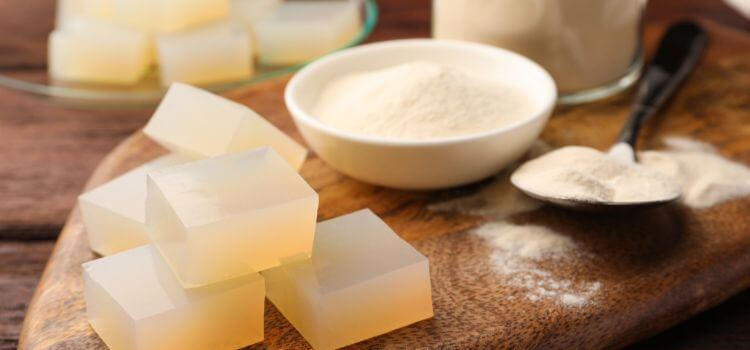As an Amazon Associate, I earn from qualifying purchases

In culinary experimentation, the pressure cooker is a formidable tool, revolutionizing how we approach cooking various ingredients. Among these ingredients, Agar, a versatile substance with unique properties, poses an intriguing challenge in pressure cooking.
In this article, we delve into the depths of pressure cooking agar to uncover the precise timing required to achieve perfection. Join us on this scientific culinary journey as we demystify the art of pressure cooking agar and unlock the secrets to optimal cooking times.
Understanding Agar
For those unfamiliar with Agar, it is a gelatin derived from seaweed commonly used as a cooking thickening agent, stabilizer, and emulsifier. Its properties make it an indispensable ingredient in various dishes such as soups, sauces, desserts, and even vegan alternatives to gelatin-based dishes.
One of the unique characteristics of Agar is its ability to set at a temperature of around 35°C (95°F) and remain stable at higher temperatures, making it ideal for use in hot dishes. This property also makes Agar an excellent candidate for pressure cooking experiments.
Overview of the properties of Agar
Aside from its setting and stability properties, Agar is also known for absorbing water, making it an effective thickening agent. This quality comes into play when pressure cooking, as the increased pressure forces more liquid into the Agar, resulting in a firmer final product.
However, this same property can also pose a challenge when not monitored carefully. As Agar absorbs water, it can become too soft and lose its structure, resulting in a runny or gelatinous final product. That’s why precise timing and technique are crucial when pressure cooking agar.
Factors Influencing Agar Pressure Cooking Time
Several factors can impact the cooking time of Agar in a pressure cooker. Some of the most significant ones include:
- Agar concentration – The more Agar used, the longer it will take to cook.
- Pressure level – Higher pressure levels will result in quicker cooking times.
- Temperature – A higher temperature inside the pressure cooker will also shorten the cooking time.
Techniques to Improve Agar Pressure Cooking Time
Some techniques can be used to optimize the pressure cooking time for Agar, including:
- Pre-soaking: Soaking Agar in water for around 30 minutes before cooking can help reduce the overall cooking time.
- Use a higher pressure level: As mentioned earlier, higher pressure levels lead to quicker cooking times. However, note that this may also result in a firmer final product.
- Reduce the amount of Agar used: As agar concentration directly affects cooking time, reducing the amount used can significantly shorten cooking time pressure.
Recommended Pressure Cooking Times for Agar

To achieve optimal results when pressure cooking agar, we recommend following these general guidelines:
- For soups and stews: Cook for 10-15 minutes on high pressure.
- For sauces and desserts: Cook for 5-10 minutes on medium-high pressure.
These times may vary depending on the specific recipe and desired consistency. As always, it is crucial to carefully monitor the cooking process and adjust accordingly to achieve the desired results.
Experimenting with Pressure Cooking Agar
Now that you better understand the properties and factors that influence Agar’s pressure cooking time, it’s time to put your knowledge into practice. Experiment with different techniques, pressure levels, and cooking times to find the perfect dish balance.
Remember, precision is key when it comes to pressure-cooking Agar. With some patience and practice, you’ll soon master cooking with this versatile ingredient in your pressure cooker. Happy experimenting! So, keep exploring and have fun with cooking! #HappyCooking
Practical Applications and Recommendations
- Always soak Agar before cooking to reduce overall cooking time.
- Use high-pressure levels for quicker cooking times, but be mindful of the final product’s firmness.
- Adjust the amount of Agar used based on the desired consistency and taste.
Recommended dishes to try with pressure cooked Agar:
- Vegan gelatin substitutes for jellies, puddings, and custards.
- Stews and sauces thickened with Agar instead of traditional flour or cornstarch.
- Hot soups and broths enriched with Agar for a thicker, more satisfying consistency.
Whether you’re an experienced cook looking to expand your repertoire or a beginner ready to experiment, pressure cooking agar is an exciting culinary journey. With the right techniques and timing, you can elevate your dishes to new heights and discover the endless possibilities of this unique ingredient.
Conclusion
In this article, we have explored the world of pressure cooking agar and uncovered valuable insights into the optimal timing required for achieving perfect results. We discussed crucial factors influencing Agar’s cooking time and offered practical recommendations for experimenting with different techniques.
Armed with this newfound knowledge, we encourage you to continue exploring and pushing the boundaries of culinary innovation with pressure-cooked Agar. The possibilities are endless, and the results are sure to be delicious. Happy Cooking!
As an Amazon Associate, I earn from qualifying purchases
Pingback: Can You Can Green Beans Without A Pressure Cooker